It is a pleasure to grow clove in the garden, because this unpretentious culture is easy to care, and during flowering gives a large number of buds. The color palette of the plant is also quite diverse and is represented by saturated-red, white, pink, purple, and even yellow and orange shades. In this article we will tell about the cloves of Shabo, the features of its landing and care.
Brief Culture Information
Carnation is a plant not only attractive, but also useful. Its buds are used in folk medicine as a medicine from diseases, and fresh flowers have long been considered a means to expulse the unclean. They often decorated the dwelling to protect it from evil spirits, and also often took with them to the far path.
From the Greek language, the name of the culture is translated as a "flower of the gods". Many nations perceived this plant as a symbol of kindness, loyalty, justice and constancy. The genus of the carnation has at least 400 species, from which remarkable varieties and hybrids are derived for growing in the gardens.
The chair of the cloves includes annual, biennial and perennial cultures that are characterized by common external signs. The carnation has a sleek nodular stem, mostly grassy, \u200b\u200bbut sometimes semi-respected. Its oblong narrow foliage is contacted, painted in green or bluish shades.
Buds, depending on the variety, can be both small and fairly large, collected in inflorescences or one by one. There are cloves with terry or simple colors, with smooth or dissected at the ends of petals. Most cultural varieties are distinguished by a thin smell, but some flowers do not smell at all.
Carnation Shabo: varieties and hybrids
Consider popular Cabo cloves, which are grown from seeds in the gardens of our country:
- Carnation "Picoti Dionys" has beautiful terry buds painted in a snow-white or in a gentle pink shade. The diameter of the inflorescence is approximately 6 cm. The height of the bush reaches 60 cm, the flowering is abundant, in one season the plant gives about 30 buds. Flowers are good in that long retains freshness in a cut form.
- "Picotics Tale" - a fragrant grade with terry large flowers, the diameter of which reaches 7 cm. Buds are often collected in inflorescences of 5 pieces. The mid-grade bush grows up to 50 cm in height. The petals of such a variety are painted in bright contrasting shades and combine several colors at once, for example, white and raspberry, yellow and pink.
- The grade "Picotics Fantasy" is represented by beautiful bright copies, the height of the stems of which reaches 60 cm. The diameter of the buds is about 6 cm, the shades of the petals are diverse, often have a contrast fraction.
- Lyon's carnation is distinguished by an unusual color range: yellow and purple buds. This variety is unpretentious in caring and cooling, is able to withstand small freezes.
- The carnation "Giant Makhrovka" blooms from August to October and grows up to 45 cm in height. This magnificent mixture is great for creating bouquets and to use it in curbdoms and hedges.
- "Watercolor" is low-grade plants with a length of the stem from 30 to 50 cm. They differ in the colorful color and saturated aroma of buds.
- Large beautiful inflorescences have the "Disco" variety, the diameter of which reaches 8 cm. It is good in the cutting, used to create bouquets and for disembarking on the flower beds.
- Carnation "Mont Blanc" has white inflorescences 6 cm in diameter. The height of the stems is 50 cm, during the flowering period, the culture produces 18-20 buds.
Growing cloves Shabo from seeds
Timing seeds
Carnation Shabo most often breeds in a seed way. Since the landing in the ground before the start of flowering runs about 150 days, which means that it is not worth tightening with the timing of this culture.
To obtain seedlings, seeds are sown in the greenhouse in winter, it is possible to do this throughout January and the first half of February. Some varieties are planted later, for example, certain hybrids begin the bootonization process after 12-16 weeks after sowing. Detailed information about the features of one or another variety is often contained on packing with seeds.
The sowing material of the Cabo cloves is characterized by a good germination, which is preserved within 2-3 years after the collection of fruits. In the context of the Russian climate, the seeds of culture often do not have time to turn completely, so it is better to purchase them in specialized stores.
Growing seedlings
For the cultivation of seedlings of the cloves of Shabo, they first prepare the correct soil, which consists of a garden land, humus, peat and sand. The sand is necessary in order to make the soil more loose and breathable, and peat and humidize the ground with nutrients. So that the seeds faster faster, they are recommended to soak them in a special solution of growth stimulator.
The earth's substrate is falling asleep in suitable containers, for example, in boxes, containers, bowls, pots. The main thing is that the depth of the dishes was at least 6-7 cm. To avoid contamination of seedlings of diseases, the container is better to pre-deliberate, byping steep boiling water or washing with a solution of manganese.
Prepare the soil and sowing material, you can start landing the carnations. The ground is well moisturized at first, after which the rows lay out the grains on it. Then they are covered with thin, not more than 3 mm, the layer of sand. Sand before this is desirable to hide in the oven and cool. Then the soil surface is slightly tamped, and the container itself is covered with a film or a newspaper folded in several layers. If condensate will be formed under the film, it must be timely shaken.
Growing seedlings from seeds, it is important to monitor the state of the soil and periodically irrigate it with water, not allowing dryness. Watering, as a rule, is carried out in the morning. In the greenhouse, the temperature is maintained at 18-20 ° C. After about 7-9 days, the first sprouts will be thrown out of the ground. When this happens, the container must be placed in a well-lit place, where the air temperature does not exceed 15 ° C.
It is desirable to periodically sprinkle fresh soil to the container with seedlings, as young shoots are very weak and fragile. It is recommended to grow the carnation in cool conditions when the ambient temperature does not rise above 15 ° C. Water sprouts moderately. Such content will help harden plants and make them resistant to many diseases.
Abundant irrigation of seedlings can lead to its massive fading. If this happened, the dead copies should be squeezed and throwing out, and their growth places sprinkle with ash or sand.
Picking seedlings
Thirsty seedlings of cloves Shabo need to dive, that is, to break and sear in separate containers. Carnation is made to dive twice. The first time it is done when 2 real leaves will grow on the stems. In this case, the seedlings transplanted into more spacious containers, observing the distance between individual plants of 4 cm. Boxes put in a light cool place, where the temperature is maintained at 12-15 ° C.
If seeding was early, the culture is dive again in the early spring, departing sprouts in separate cups. The stalks are plugged into the ground to the root neck level. With late crops, the second pickup is carried out in the second decade of March, and the plants do not deepen to the root cerv. For seedlings, you can use peat pots, which are subsequently planted on the flowerbed, where they independently decompose in the soil.
The graceful seedlings are pouring at 5 leaves to form more bushy and lush specimens with a large number of new shoots. Pages are carried out in about the first half of April.
Transplanting Carnations to a Permanent Place of Growth
Before transplanting the cloves Shabo to grow on the flower, you should choose a suitable area for the plant. It should be well covered with the sun and be covered by wind and drafts, which are detrimental to this culture. Soil in front of the landing can not be fertilized, but it is still better to enrich it with nutrients, making a slightly humoring or ash during autumn perplex.
Saplings of cloves are transferred to open soil only after it is established quite warm weather and the risk of night frosts will disappear. This period, as a rule, falls on the second half of May.
So that individual plants prevented each other, between them observe the distance of 40-50 cm. Buckets at cloves Shabo clips are quite high and lush, the height of the stems sometimes reaches 1 m, and the flowering period lasts until the first frost. Given this, it is recommended to drive the pegs into the soil to the soil, to which you could suspect the shoots, so that they do not break under the weight of their own weight.
Carnation Shabo: Care Features
The advantage of such a culture is its unpretentiousness, good tolerability of drought and frost resistance. In a relatively warm winter, the carnation can easily overfeed the season on the flowerbed. By the spring of her foliage and stems will get a whitish shade, but it will not affect the education of new buds. However, guess in advance which winter will be quite difficult. Therefore, so as not to risk, plants are recommended to transplant into pots and hide into a warmer room: in a basement, greenhouse, on a loggia or glazed balcony.
Replanting the culture, it needs to be turned out so that it is not to damage the earthen one who holds the roots. Carnation Shabo is undesirable to grow in the same place for longer than two years in a row, otherwise the plant will stop blossoming.
To ensure a sufficient number of buds can be used by periodic feeding. Carnations fertilize once every 3 weeks, introducing combined mineral compositions into the soil. The root culture system requires air, so the land is also desirable to loose from time to time. To irrigation, the plant is undemandingly, it can be moistened rarely, usually do it no more than 2 times a week with a very arid weather. So that the bushes looked carefully, the side shoots are periodically cut off.
The cloves shabo prone to the defeat of viral and fungal diseases, it also often suffers from the attacks of garden pests. Viral diseases are poorly reflected in the appearance of bushes and their ability to flowering. Viruses insect are transferred and remain living in affected plants. Such instances are not suitable for shilling.
All sick plants should be immediately removed and destroyed, and the rest of the embossed chips for the prevention of spraying with copper vitrios. Special insecticides will help destroy pests, as well as infusions of tobacco, onion and garlic.
Carnation Shabo, photo:

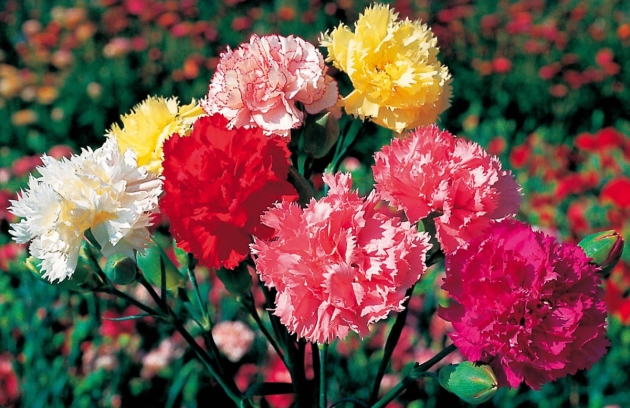

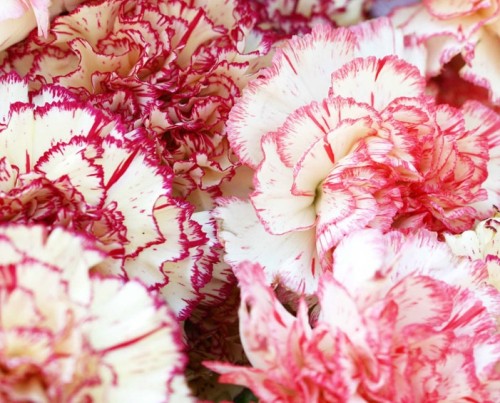
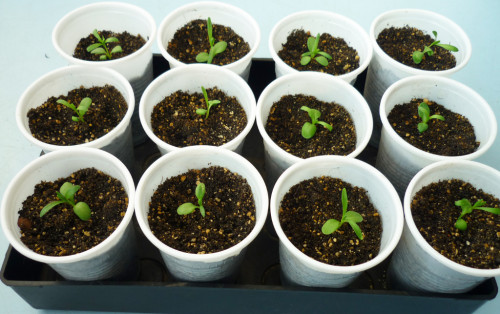
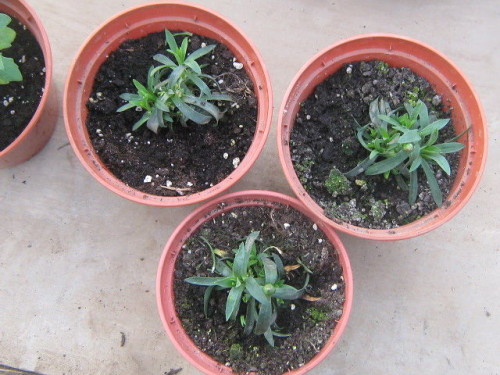
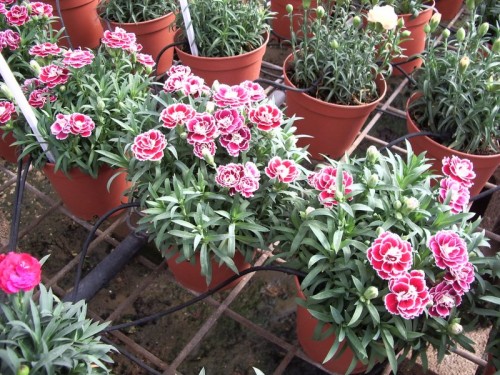
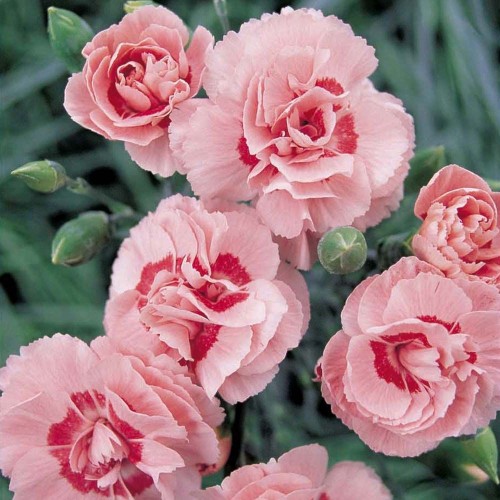
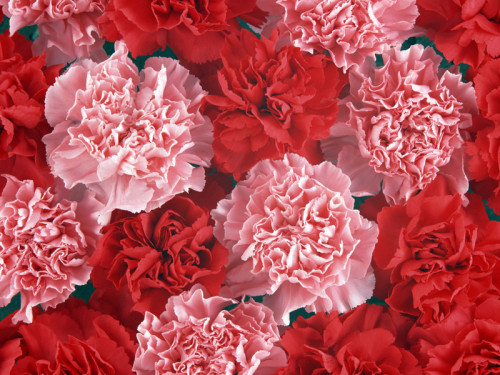
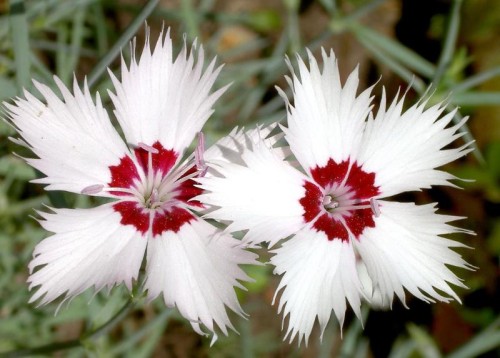
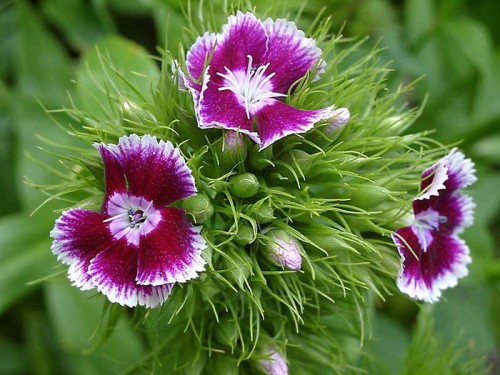
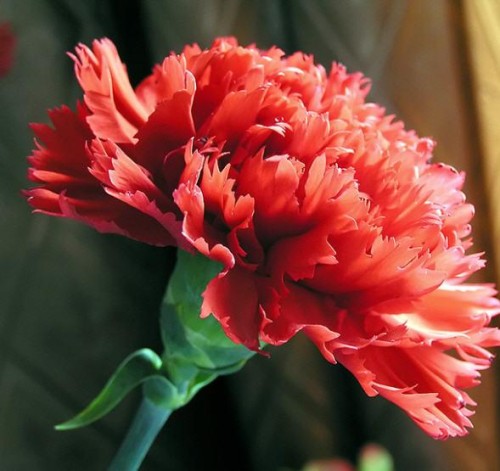
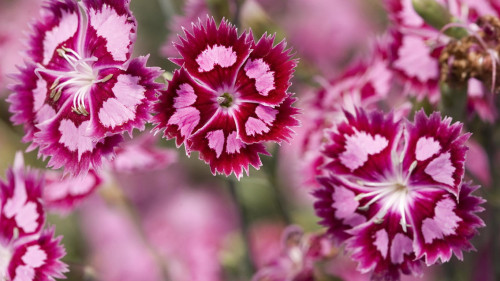
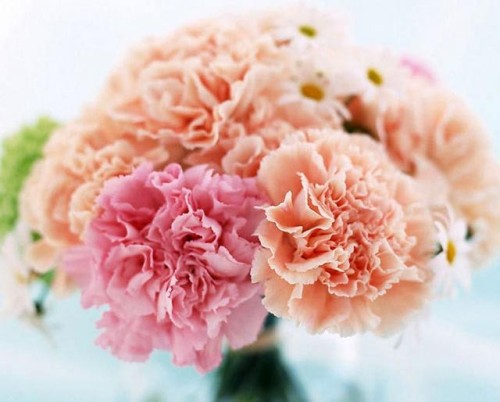












 Start a discussion ...
Start a discussion ...